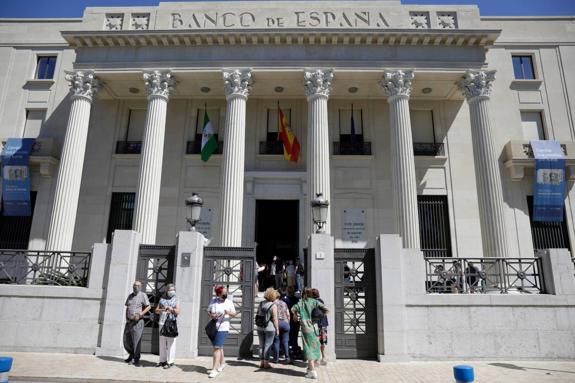

Sections
Highlight

SUSANA ZAMORA
Friday, 2 July 2021, 16:35
Compartir
Some people hung on to them through nostalgia and others still had them lying around the house, meaning to change them for euros one day. But it's too late now. The Bank of Spain had set Wednesday 30 June 2021 as the final day that pesetas could be changed, and a lot of people left it to the very last minute, judging by the queues that built up at the bank's headquarters in Madrid and its 15 branches around the country, including Malaga.
It is 18 years since the euro came into circulation, which is more than enough time to get rid of the old pesetas, which had been the Spanish currency since 19 October 1868, by decree of the provisional government after Isabel II was overthrown. But the Spanish tendency to leave everything to the last minute meant that dozens of people in Malaga had congregated outside the doors of the Bank of Spain in the Paseo del Parque on Monday this week.
The sun was blazing and the temperature was high: the 'terral' wind had raised the thermometers to nearly 35ºC, but even so about 30 people waited outside for well over an hour to change the pesetas that some in the country had kept as a "treasure", although on average they were only swapping about 100 euros' worth.
According to the latest data from the Bank of Spain, in May this year people in this country were in possession of 132.94 billion pesetas in banknotes (799 million euros) and 130.61 billion pesetas in coins (785 million euros).
Pesetas in circulation
The bank estimates that 45 per cent of the peseta coins which were in circulation after the euro was introduced would never be exchanged, because they would remain in the hands of collectors, or they were damaged, had been lost or had left the country at some point in the pockets of international tourists.
As a general rule, all the peseta banknotes and coins which people wanted to exchange had been issued after 1939. Those produced between 1936 and 1939 (during the Spanish Civil War) could also be changed, but only after being analysed for authenticity by experts at the Bank of Spain.
For those who were waiting in the sun outside the bank in Malaga on Monday, there were signs to explain the process of exchanging the pesetas for euros. In the case of coins, the Bank of Spain was using an express system whereby they could be handed over to be counted later and the euro equivalent credited to the holder's bank account if they so wished.
Publicidad
Publicidad
Publicidad
Publicidad
Reporta un error en esta noticia
Necesitas ser suscriptor para poder votar.